Not long ago I was invited by a shooting club in my hometown to give a talk on shooting safety to a group of young people who were being trained in target shooting. What these kids had learned about shooting consisted entirely of the basic fundamentals of sighting, gun stance, holding and squeezing the trigger, and the typical gun safety routine.
It was all good and essential for a novice. In fact, after watching their maneuvers and different shooting positions, I told the instructor frankly that there remained little that I could tell the students that would benefit them in their gun practice. Then the instructor informed me that despite the fact that the kids were well-trained in the fundamentals of gun handling and target shooting, he realized that as hunters they would go up against a different shooting scenario in the wild and would appreciate me giving them some tips about typical game shooting reality.
They were shooting at a conventional one-inch bull’s eye target at fifty yards. This would mean two-minute-of-angle firing at one hundreds yards, and that’s good shooting in any sort of category. Obviously, about the only scoring was done from the various rest and semi-rest positions. When I told them to substitute twelve-inch targets for their game shooting practice, they all looked at me puzzled.
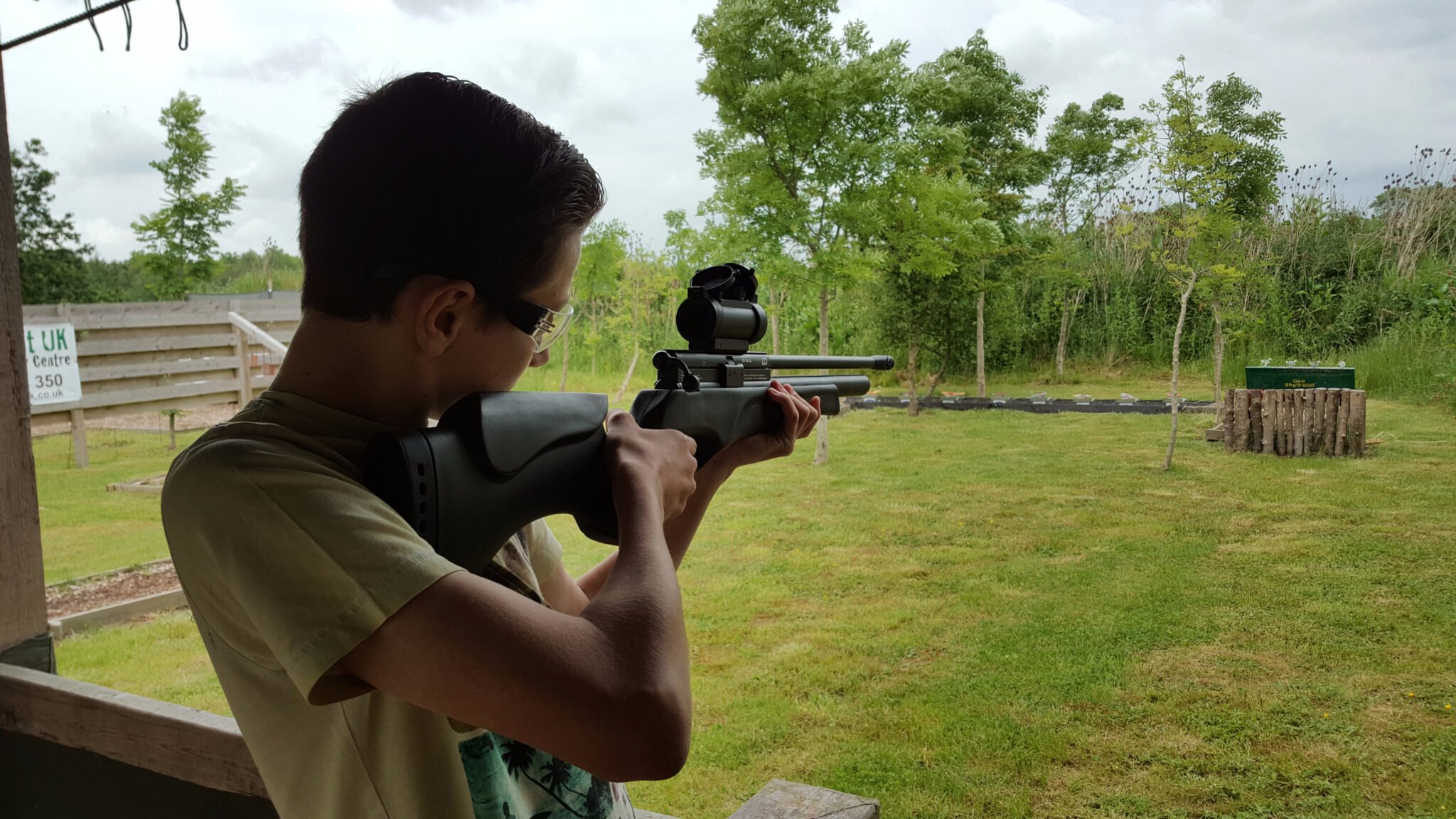
Naturally, when a person has acquired the ability to score a two-minute-of-angle shot from a prone shooting position and then is told to increase his target twelve times in size, they will think the teacher is not sane. But I sat down and recounted to them some facts in relation to handicap shooting that is very important to game shooting.
Going back a few years, I remembered how my youngest son took his first lessons in shooting, and how through slow training he learned the basic techniques from the different target positions. Then after acquiring the ability to make clean offhand shots from proper shooting stance, I presented him with some twelve-inch targets drawn on large cardboard that measured four feet square. His natural response was, “What are these, two hundred yard targets?”
“No.” I responded. “These are twenty-five yard targets, and you’re going to do some very tough practice before you can hit them with confidence.” The kid laughed.
We were out in camp on the range, and I set these targets up at intervals among native shrubbery so they would become visible to a person traveling a certain trail about twenty-five yards away. I then told the kid to take his rifle, run for two hundred yards with it, to simulate the condition his nerves and breathing would be in after having clibed a mountain on a deer hunt.
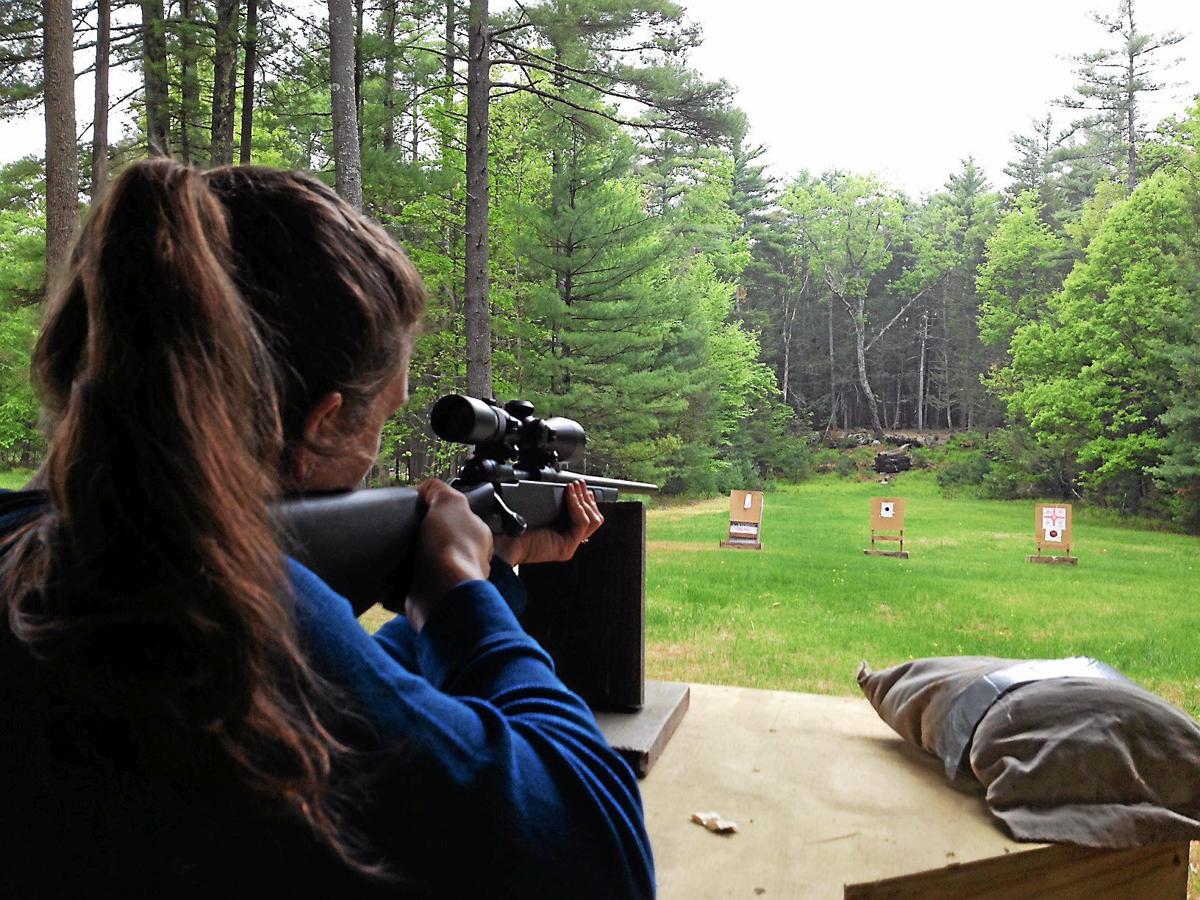
Then to start walking along this trail at the end of his run, and as each of these targets become visible to him to whirl facing it, whip up his gun and fire. To remember they are deer and are browsing in the shrubbery. The black one-foot target in the center of the board represents the heart-lung area that he is shooting at but will be visible for only an instant, after which the deer will jump into cover. He must shoot quick, for the is no time for checking his sights after the gun reaches his shoulder. This is snap-shooting.
Out of four targets shot at, there was one bullet in the edge of the black, and the other three barely connected with the board. To learn snap-shooting with a rifle, I had the kid set up a large target at very close range and dry-fire at it with an empty gun until he learned to point the gun accurately each time it was mounted to his shoulder.
The gun came up with hammer back (safety off, if bolt-action type) and if sights were on center of the target at first mount, to fire! Otherwise, to lower hammer and gun and remount the gun cocking the piece as it came up. If anyone thinks this isn’t terrible work, just try and do it. It took many mounts of that rifle to bring that boy to a place where he could point accurately at his target with each mount.
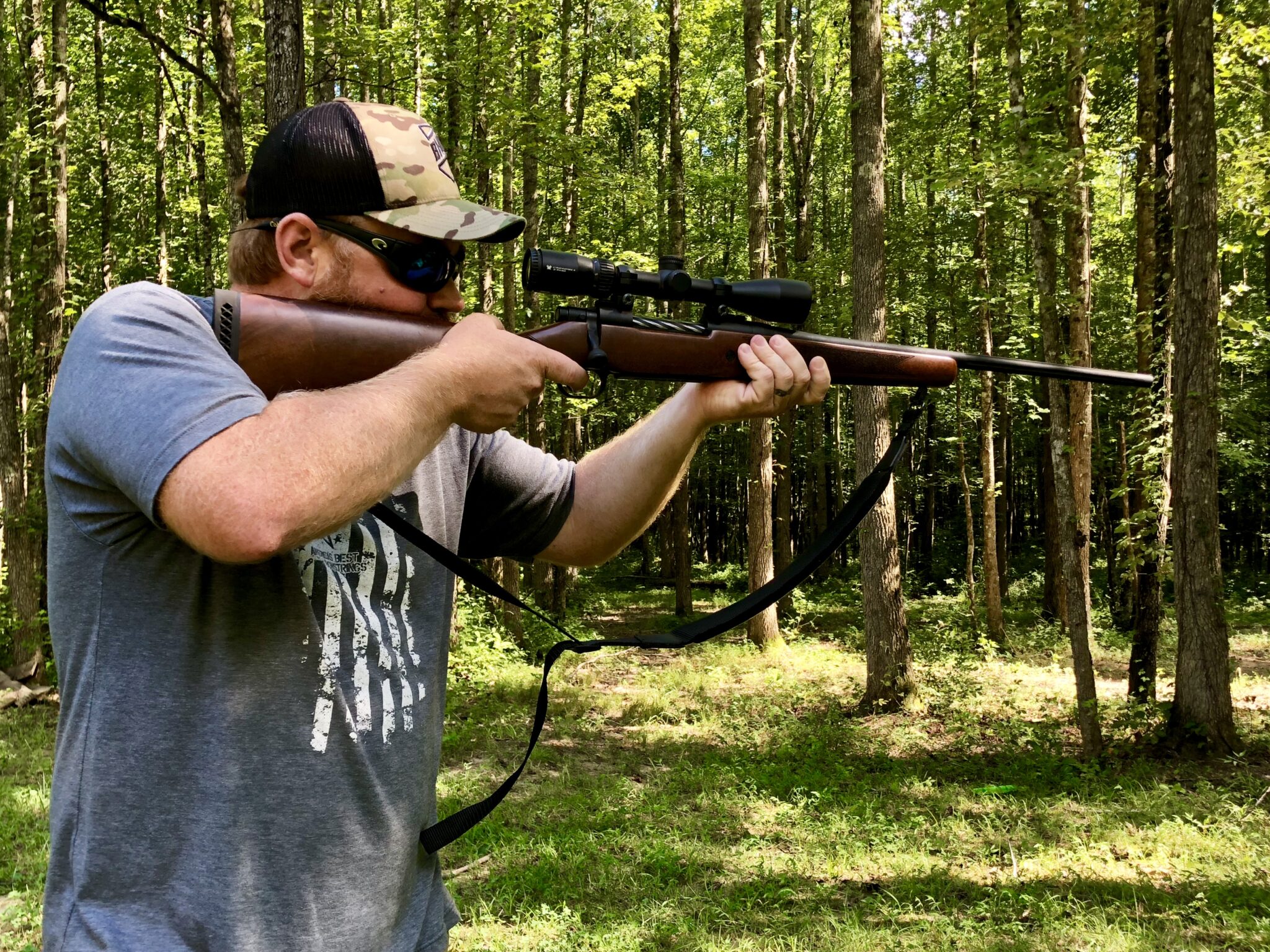
Remember that there is no such thing as perfection in the shooting. That is something all gun-aficionados are striving for, but never really attain. However, it is possible to do enough handicap shooting to get decent number of hits from positions that seem improbable at first.
When the kid had done sufficient dry-firing to allow him to get about six shots in the bull’s eye out of ten fired, we started on various angle shots, that is, we angled his targets off from every point fo the compass and caused him to run, cover, leap, wheel, and stumble into all manner of positions while attaining these various positions. The results were quite amazing to him, and sufficiently interesting to keep him practicing. I believe today he is about as good at snap-shooting game as any person I’ve ever hunted with.
Dodging around through such shrubbery as we have here in the southeast, I hid these large targets in various positions so he would come upon them at different angles as he walked, and still be within close shooting range of each target when first sighted. His instructions were to shoot from the right shoulder position if the target appeared on his left, and from the left shoulder if it appeared on his right. But in any event, to grasp the idea that his hypothetical deer was alerted and would jump away into cover instantly. He must mount the rifle with a swift movement and fire in that one continuous movement. No time for checking and rechecking his aim.
One girl asked, “Would you advise shooting in such a manner as that at a real anima?” My answer was, “No.” That is why we advocate snap shooting practice at harmless improvised targets that will reveal our errors until we can correct them. To go into the wild armed only with the known ability to make slow and deliberate shots is what’s damaging our game herds now. The right kind of handicap shooting worked at diligently, will not only teach a person what they can’t do but will improve their chances for a clean kill in a manner that they otherwise would deem impossible.
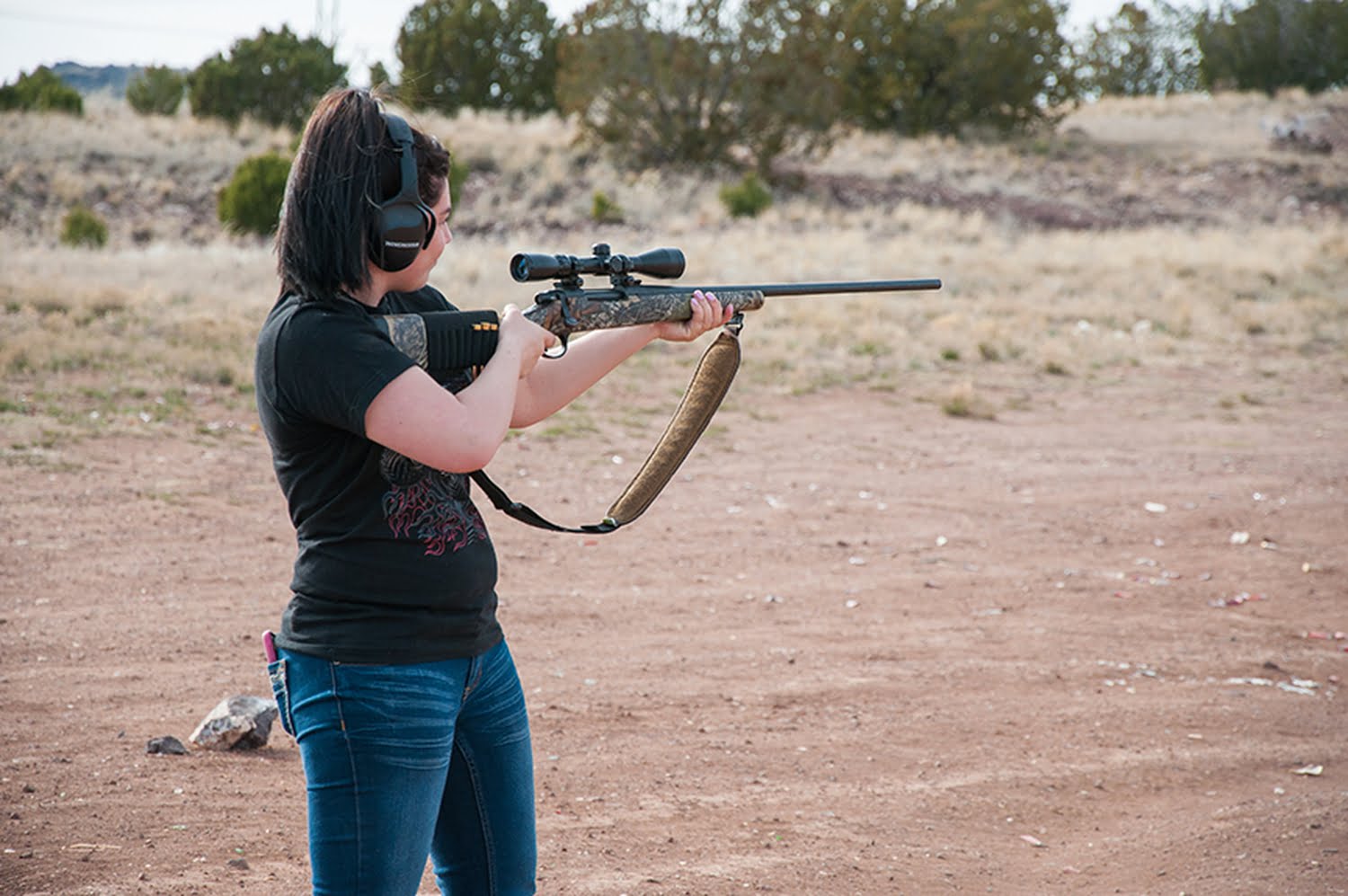
To reap the most benefits from this kind of shooting, I recommended the young people to remove the disc from their peep sights and just look through the open frame of the peep. This seemed radical and it created a lot of arguments among them. However, it is impossible to get down on a target quick with the small peep aperture that is recommended for the finest target shooting. And amazing as it may seem, one acquires the knack of snap shooting with the open peep sight, they will find himself still able to do as fine target shooting without the small disc as they could with it. In this regard, a lot of standard techniques are still catered to in the shooting world that should have been ditched many years ago.
Personally, I stopped using the peep sight a long time ago. I wither want a good low-powered scope or open-sights, preferably open. I’ve had several people look at my gun sights and wonder how I ever hit anything with them at more than forty feet. My front sight is an eighth of an inch broad across its square face. My rear sight is wide enough to allow for four front sights to fill up its picture. Yet, the whole work is leveled off at top, sides, and bottom.
I shoot over my front sight and not around it. Even with this quick combination, I quite often fail to make a direct hit in snap shooting. However, I happen to know that I am shooting much closer and a lot faster, than would be possible with any other kind of sight-combo.
During the summer and the spring months of the season, while the wildlife of our forests and dales are reproducing their kind, there is the small opportunity for the average hunter to shoot at live targets. This should not mean that we should leave the gun in our cabinets and discontinue trying shooting altogether. The more solid handicap target practice you can get in your off-season, the better you will be prepared to hunt for the big-time game this autumn.

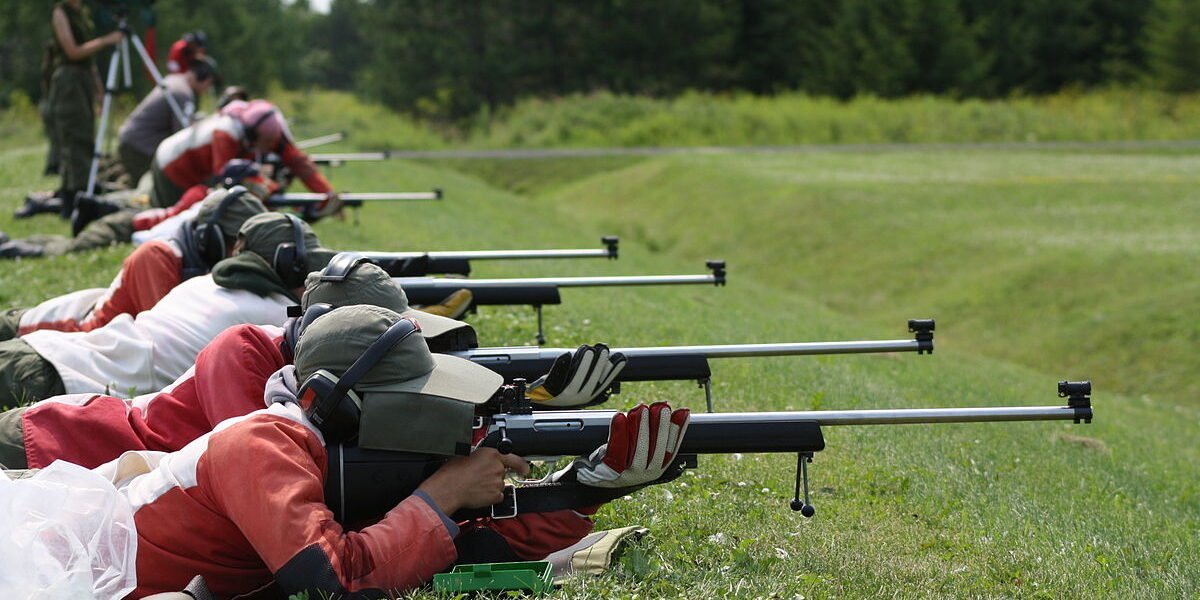

I appreciate the details on your websites. Appreciate it!
You’ve got terrific info right.